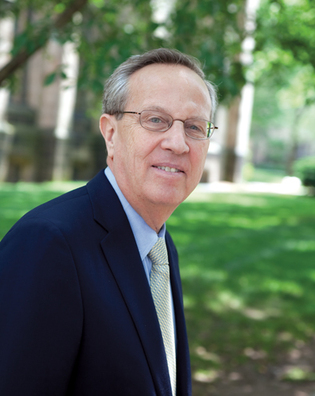 loading
loading
Q&A: Rick LevinHard times for the humanitiesYale's president discusses the job market for PhDs, and how long it takes to write a dissertation.  Mark OstowView full imageY: In August, Thomas Pollard, dean of the Graduate School, released a report called “Improving Graduate Education at Yale.” It included this rather grim statement: “Very few high-quality academic jobs are currently available in many humanities disciplines.” L: The recession has caused dramatic cuts in faculty hiring around the country. The humanities, which already had a relatively weak entry-level job market for new PhDs, have been the most severely affected. It is a national tragedy that there are so few jobs. Many talented potential future scholars are unable to get jobs in good places. Many get no jobs at all. Y: The report also said, “Dealing with the reality of a collapsing job market will require rethinking of missions in some disciplines.” What kind of rethinking? L: There are two possible solutions. One is fewer students. Another is to think more creatively about how we might prepare students for pursuits other than being full-time professors. Our dean of admissions for Yale College [Jeffrey Brenzel ’75] has a philosophy PhD. He is a wonderful teacher of philosophy, but he is also a great dean of admissions. Perhaps there are more opportunities to prepare graduate students for other roles in higher or secondary education. Y: The report included numbers on the cost to the Graduate School of students in different disciplines. The net annual cost for humanities students is $16.5 million. PhD students in science are funded by their professors’ research grants, so the figure for science students is only $3.8 million. For social sciences it’s $10.3 million. For a single student to spend six years, the cost to the school is $17,000 in the sciences and $143,000 in the humanities. L: In the humanities and the social sciences, we support students almost entirely out of university funds. But the cost differentials have not had a major impact on resource allocation. If we were a profit-making company, of course, it would. But we’re not. Our mission is to educate students across the full range of the arts and sciences. Y: The report also looked at the length of time for students to finish their PhDs and whether students who left without PhDs did so very late in the game. L: Twenty years ago, everyone was focused on time to degree. But it is equally important to ask about the people who don’t complete: when do they quit? It is much more humane for a student to spend two years and walk away with a master’s degree, head held high, than it is to spend six or seven years and walk away with the same master’s degree. Usually, such an outcome could have been predicted. If we give appropriate time and attention to a student, we can determine relatively early whether he or she is likely to complete the degree—or whether this person was not cut out for a PhD. In the humanities especially, it takes a certain kind of temperament and discipline to work in isolation and be productive. One reason the eventual completion rate is better and attrition is earlier in the sciences is that students meet with their professors every day. They work in the lab alongside their adviser—rather than coming in once every three months with another draft of a chapter. Science students get consistent feedback. By showing up every day in the lab, they learn: “Is this something I want to do for the rest of my life—or not.” Research in humanities is typically the work of an isolated individual, rather than a team effort. But still, you could import some of the best practices of the sciences into the humanities. The appendix of Dean Pollard’s report describes 25 or 30 practices of different departments that have proven to work. One is a weekly meeting of all the students involved with a particular faculty member, to talk about their progress. Y: Many humanities professors value the report and those mentoring ideas. But there’s a lot of concern that the emphasis on speed and efficiency has the sound of a business paradigm—that it doesn’t fit the graduate experience in their fields. For a 25-year-old, it is a long labor to formulate a scholarly opinion on a humanities subject and write a 300-page book. One faculty member called it a “famously peripatetic journey.” L: I take the point—it takes time to find your topic. I flip-flopped dissertation topics two or three times before settling in. But I do think that even students on a peripatetic journey would fare better with more opportunities for exchange and feedback. Y: What about spending on humanities—faculty numbers, for instance? Yale is making a push for more and better science. Are the humanities keeping pace? L: Yes. The number of ladder faculty in the humanities has increased over the last decade, although the percentage of faculty in the humanities has declined slightly, in response to undergraduate enrollment patterns, from 38 to 35 percent. The natural science faculty has remained constant at 38 percent, while the social science faculty has grown, again in response to enrollments, from 24 to 27 percent. The humanities remain a great strength here. We want to have the strongest graduate programs in the country in as many departments as we can. Our graduate programs still produce extraordinary young scholars and teachers. We need a sufficiency of people educated in humanities in this country. They help impart values and encourage thoughtful reflection. This is worth having.
The comment period has expired.
|
|